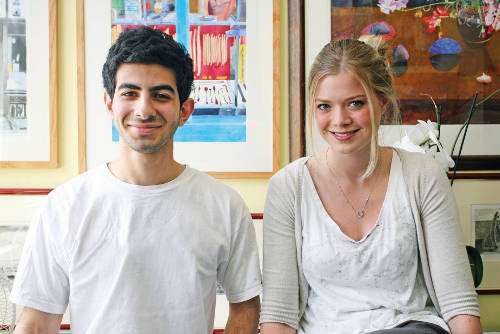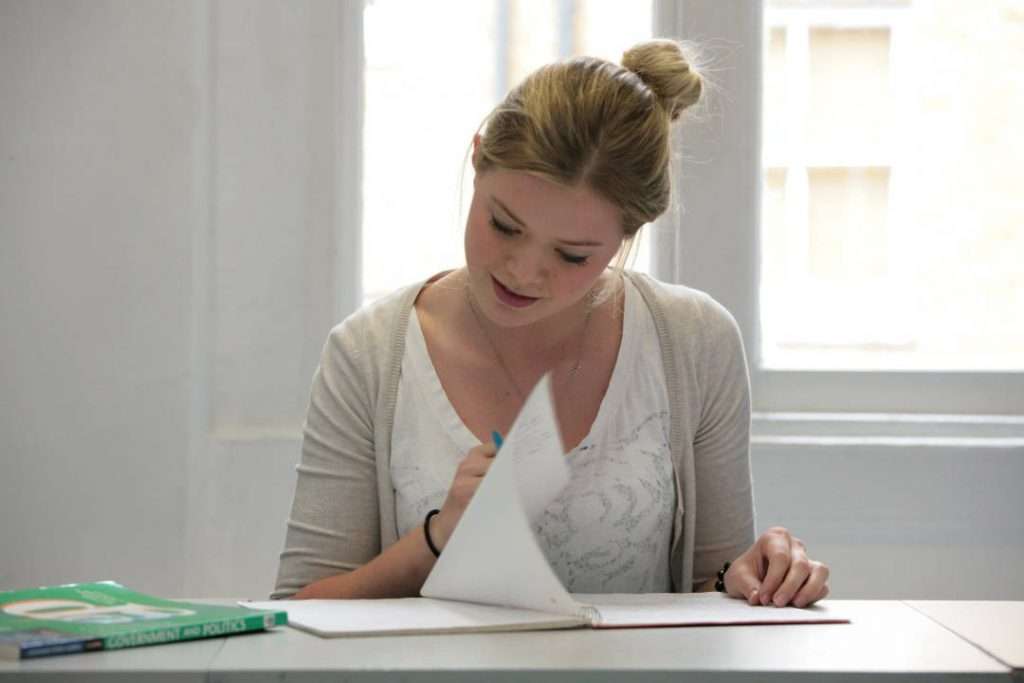HISTORY OF ART
History of Art
History of Art is a stimulating subject, which enables students to develop their historical, theoretical and critical understanding of art, including painting, sculpture and architecture. Students also explore links between art, its contents and its contexts, as well as evaluating the importance of art in the world. At Westminster Tutors, our students are surrounded by works of art, which they can study in detail, and they also enjoy lessons taking place at the many art galleries around London.
Course outline
Visual Analysis
- Painting
- Sculpture
- Architecture
Themes
- B1 – Nature in art and architecture
- B2 – Identities in art and architecture
- B3 – War in art and architecture
Periods
- C1 – Invention and illusion: the Renaissance in Italy (1420-1520)
- C2 – Power and persuasion: the Baroque in Catholic Europe (1597-1685)
- C3 – Rebellion and revival: the British and French Avant-Garde (1848-99)
- C4 – Brave new world: Modernism in Europe (1900-39)
- C5 – Pop life: British and American contemporary art and architecture (1960-2015)
Assesment
A Level
Paper 1: Visual Analysis and themes
- Assessment on two of the themes B1-B3
- 110 marks
- 3 hours written paper
- 50% of total A level
Paper 2: Periods
- Assessment on two of the periods C1-C5
- 110 marks
- 3 hours written paper
- 50% of total A level
Selection of works
Theme B1 - Nature in art and architecture
Students choose one specified artist/architect from each type, and two works by each:
Painting/2D art
- Albrecht Dürer (1471-1528)
- JMW Turner (1775-1851)
- Claude Monet (1840-1926)
- Georgia O’Keeffe (1887-1986)
Sculpture/3D art
- Giambologna (1529-1608)
- Barbara Hepworth (1903-75)
- Barry Flanagan (1941-2009)
- Richard Long (1945-)
Architecture
- John Nash (1752-1835)
- Antoni Gaudí (1852-1926)
- Frank Lloyd Wright (1867-1959)
- Santiago Calatrava (1951-)
Students choose at least six additional works, at least three of which must be selected from the list of works from beyond the European tradition (one from each type):
Painting/2D art
- Wen Zhengming, Wintry Trees, 1543 (British Museum)
- Mansur, Zebra, 1621 (V&A)
- Hokusai, The Great Wave, c.1830 (Metropolitan Museum of Art, New York)
- Bessie Nakamarra Sims, Possum Dreaming, 1995 (Brighton and Hove Museums)
Sculpture/3D art
- Double-headed serpent, 1400-1521 (British Museum)
- Tipu’s Tiger, 1772-99 (V&A)
- El Anatsui, Erosion, 1992 (Smithsonian)
- Ai Weiwei, Sunflower Seeds, 2010 (Tate Modern)
Architecture
- Temple of the Jaguar, Chichen Itza, Mexico, c.800
- Angkor Wat, Cambodia, 12th century
- The Bahá’í House of Worship, New Delhi, India, 1986
- Yeang, Mesiniaga Tower, Malaysia, 1992
Theme B2 - Identities in art and architecture
Students choose one specified artist/architect from each type, and two works by each:
Painting/2D art
- Jan van Eyck (1390-1441)
- Rembrandt van Rijn (1606-69)
- Elisabeth Vigée Le Brun (1755-1842)
- Vincent van Gogh (1853-90)
Sculpture/3D art
- Jean-Antoine Houdon (1741-1828)
- Grayson Perry (1960-)
- Yinka Shonibare (1962-)
- Marc Quinn (1964-)
Architecture
- Inigo Jones (1573-1652)
- Christopher Wren (1632-1723)
- Richard Rogers (1933-)
- Zaha Hadid (1950-2016)
Students choose at least six additional works, at least three of which must be selected from the list of works from beyond the European tradition (one from each type):
Painting/2D art
- Bichitr, Shah Jahan receives his sons, 1628 (Royal Collection)
- Frida Kahlo, Self Portrait along the Border Line between Mexico and the USA, 1932
- Liu Cunhia, Chairman Mao en route to Anyuan, 1967
- Shirin Neshat, Rebellious Silence (part of Women of Allah series), 1993-97
Sculpture/3D art
- The Sultanganj Buddha, 7th century (Birmingham Museum)
- Shiva Nataraja: Lord of the Dance, 12th century (V&A)
- Benin plaque showing the façade of the Royal palace, 1550-1650 (British Museum)
- Michael Tuffery, Pisupo lua afe (Corned beef 2000), 1994 (Museum of New Zealand)
Architecture
- Lakshamana Temple, Khajuraho, India, c.930
- The Temple of Heaven, Beijing, China, 15th century
- Mimar Sinan, Süleymaniye Mosque, Istanbul, Turkey, 1558
- Nayyar Ali Dada, Alhamra Arts Council, Lahore, Pakistan, 1992
Theme B3 - War in art and architecture
Students choose one specified artist/architect from each type, and two works by each:
Painting/2D art
- Eugène Delacroix (1798-1863)
- Francisco Goya (1746-1828)
- Pablo Picasso (1881-1973)
- Otto Dix (1891-1969)
Sculpture/3D art
- Antonio Canova (1757-1822)
- Henry Moore (1898-1986)
- Jenny Holzer (1950-)
- Jeremy Deller (1966-)
Architecture
- François de Mondion (1681-1733)
- Karl Friedrich Schinkel (1781-1841)
- Edwin Lutyens (1869-1944)
- Daniel Libeskind (1946-)
Students choose at least six additional works, at least three of which must be selected from the list of works from beyond the European tradition (one from each type):
Painting/2D art
- Night attack on the Sanjo Palace, 13th century (Museum of Fine Arts, Boston)
- Miskina and Sarwan, Akabarnama: Mines exploding during the siege of Chitor, c.1586 (V&A IS.2:66-1896)
- Iri and Toshi Maruki, Fire, Panel 2 of the Hiroshima Panels, 1950
- El Salahi, The Inevitable, 1984 (Tate Modern)
Sculpture/3D art
- Kneeling Archer, Terracotta Army, 210 BCE (Shaanxi)
- Haniwa Warrior in keiko armor, 6th century (Tokyo National Museum)
- Elephant Armour, 1600 (Royal Armouries, Leeds)
- Dadang Christanto, They give evidence, 1996-97 (The Art Gallery of NSW, Sydney)
Architecture
- Himeji Castle, Hyogo, Japan, 1333
- Fasil Ghebbi Castle, Gondar, Ethiopia, 1632-67
- The Golden Fort, Jaisalmer, India, 1156
- Kenzo Tange, Hiroshima Peace Memorial Museum, Tokyo, Japan, 1955
Period C1 – Invention and illusion: the Renaissance in Italy (1420-1520)
Students choose one specified artist from each type, with three works by each (six works in total):
Painting/2D art
- Giovanni Bellini (1430-1516)
- Sandro Botticelli (1445-1510)
- Raphael (1483-1520)
Sculpture/3D art
- Donatello (1386-1466)
- Tullio Lombardo (1460-1532)
- Michelangelo (1475-1564)
Period C2 – Power and persuasion: the Baroque in Catholic Europe (1597-1685)
Students choose one specified artist from each type, with three works by each (six works in total):
Painting/2D art
- Caravaggio (1571-1610)
- Peter Paul Rubens (1577-1640)
- Diego Velázquez (1599-1660)
Sculpture/3D art
- Juan Martinez Montañés (1568-1649)
- Gianlorenzo Bernini (1598-1680)
- Pierre Puget (1620-94)
Period C3 – Rebellion and revival: the British and French Avant-Garde (1848-99)
Students choose one specified artist from each type, with three works by each (six works in total):
Painting/2D art
- William Holman Hunt (1827-1910)
- Édouard Manet (1832-83)
- Paul Gauguin (1848-1903)
Sculpture/3D art
- Edgar Degas (1834-1917)
- Auguste Rodin (1840-1917)
- Alfred Gilbert (1854-1934)
Period C4 – Brave new world: Modernism in Europe (1900-39)
Students choose one specified artist from each type, with three works by each (six works in total):
Painting/2D art
- Henri Matisse (1869-1954)
- Ernst Ludwig Kirchner (1880-1938)
- Georges Braque (1882-1963)
Sculpture/3D art
- Constantin Brancusi (1876-1957)
- Jacob Epstein (1880-1959)
- Alberto Giacometti (1901-66)
Period C5 – Pop life: British and American contemporary art and architecture (1960-2015)
Students choose one specified artist from each type, with three works by each (six works in total):
Painting/2D art
- Andy Warhol (1928-87)
- David Hockney (1937-)
- Chris Ofili (1968-)
Sculpture/3D art
- Judy Chicago (1939-)
- Mary Kelly (1941-)
- Rachel Whiteread (1963-)
Specification
Teachers
BA (Lancaster), MA (BIAD), MA (Kent), PhD (Loughborough)





